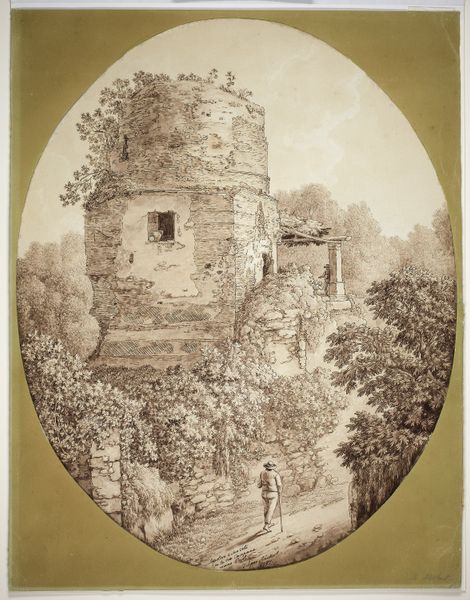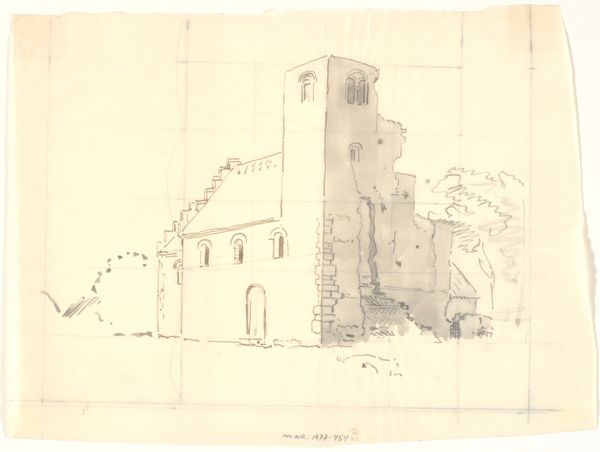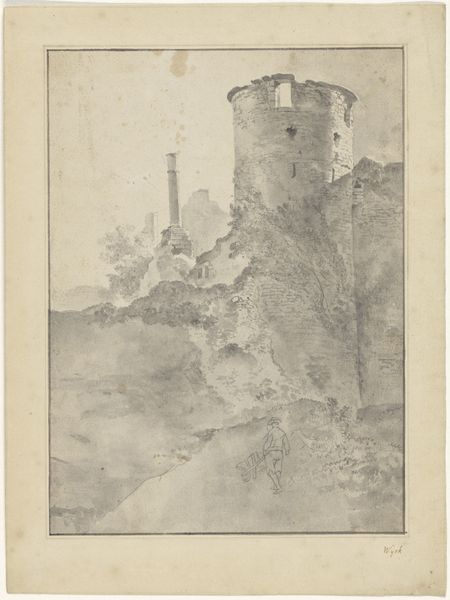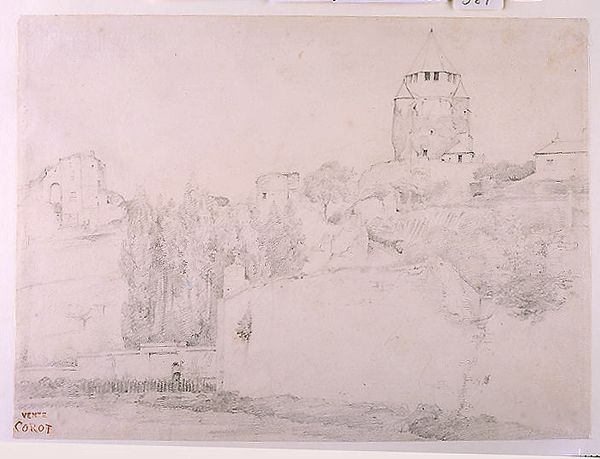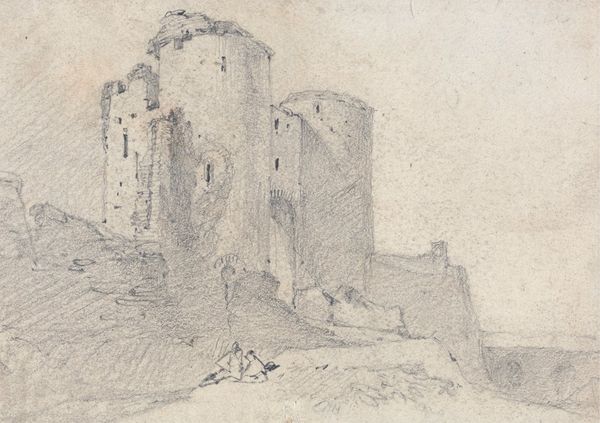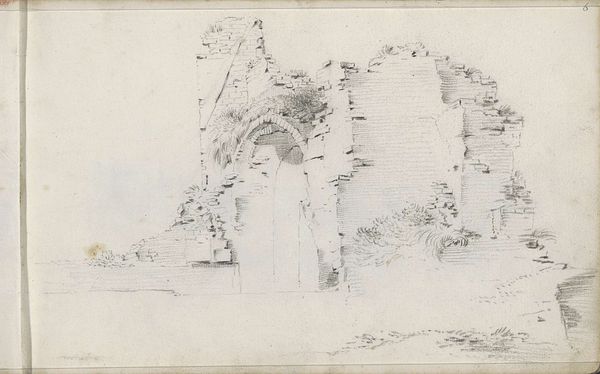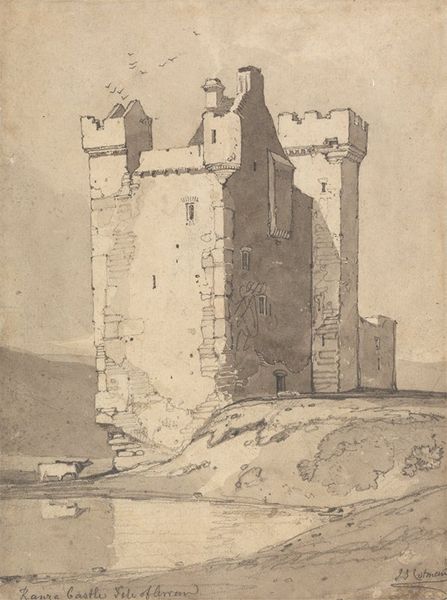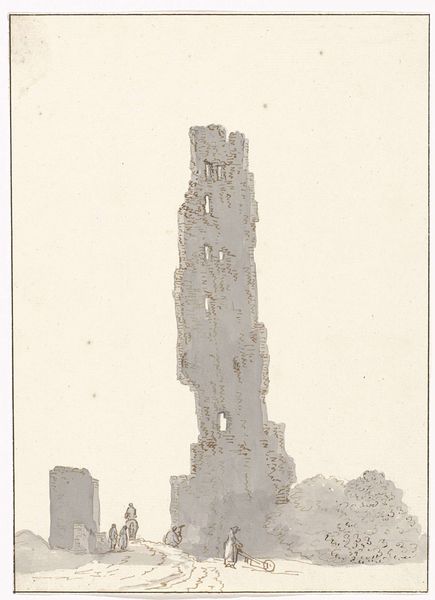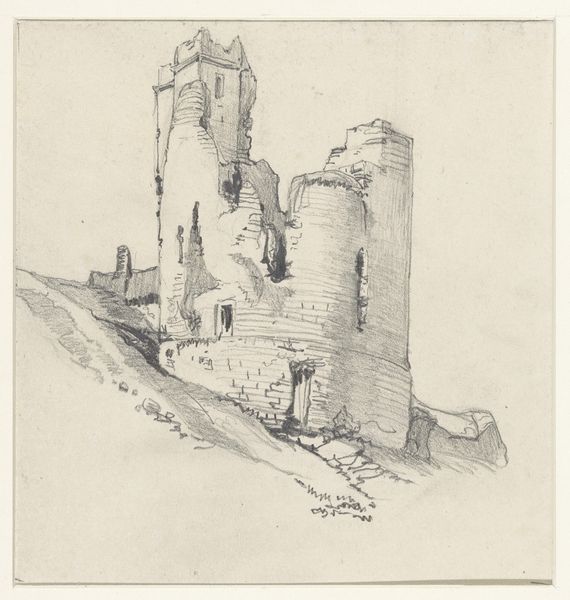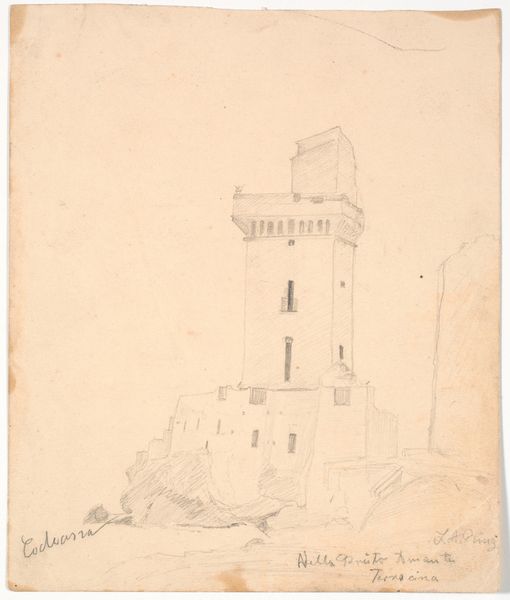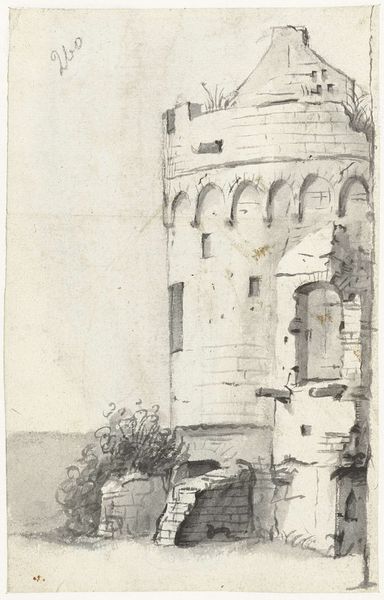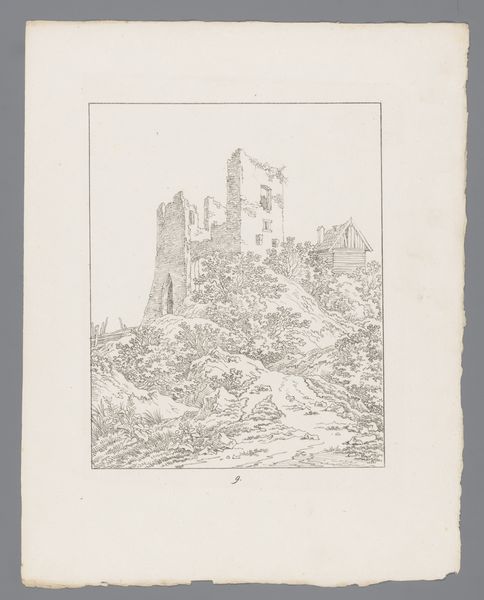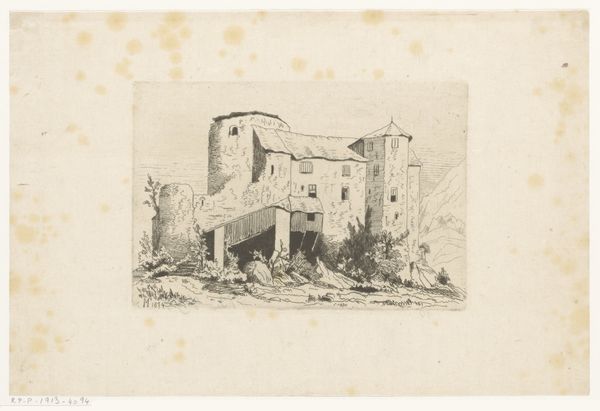
drawing, watercolor
#
drawing
#
neoclassicism
#
landscape
#
etching
#
watercolor
Dimensions: height 178 mm, width 248 mm
Copyright: Rijks Museum: Open Domain
Editor: This watercolor drawing by Louis Ducros from 1778, titled "Exterior of the tomb of Cicero between Itri and Gaeta," has a hauntingly serene quality. The ruined structure feels timeless and heavy with memory. What symbols do you see at play here? Curator: The ruin itself is the central symbol. It represents the decay of empires, the transience of human achievement, and the inevitable victory of nature. Notice how the foliage encroaches upon the stonework; nature reclaims what time and conflict erode. The tomb of Cicero carries potent weight, suggesting not just individual mortality but also the fate of republics. What emotions does the color palette evoke in you? Editor: There's a faded grandeur suggested by the muted tones... a sense of something precious lost. Almost like a collective forgetting. Curator: Precisely. Ducros employs a restricted palette, emphasizing greys and muted greens to cultivate a melancholic mood. Think about what Cicero stood for: oration, philosophy, the Roman Republic. The deterioration visualized here signifies the deterioration of those ideals, prompting viewers to consider their own relationship to the past and the future of their own values. Does the tomb suggest anything to you about cultural continuity, despite its ruined state? Editor: Yes, absolutely. Its presence still marks the landscape, asserting a connection to antiquity. Like a visual echo. Even in decay, it speaks volumes. Curator: A vital insight. Though weathered, it is still recognizable and marked. That persistence reflects the ongoing human impulse to connect with and understand our forebears. Ducros captured a visual representation of cultural memory: faded, yes, but not erased. Editor: I never considered a building as a mnemonic device before. Thank you, this has really opened my eyes! Curator: And thank you, your fresh perspective helps illuminate the ways historical sites like Cicero’s tomb can engage with the contemporary world.
Comments
No comments
Be the first to comment and join the conversation on the ultimate creative platform.
